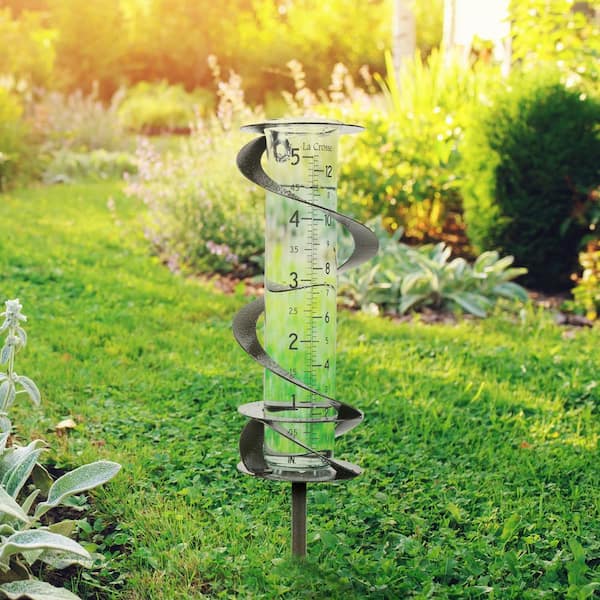Rain Gauge Purchasing Guide: What You Required to Know for Optimal Efficiency
Rain Gauge Purchasing Guide: What You Required to Know for Optimal Efficiency
Blog Article
Introducing the Scientific Research Behind Rain Gauges: Just How These Instruments Play a Critical Function in Climate Research Study and Ecological Tracking
Rainfall evaluates, apparently easy devices, hold a profound value in the world of climate research study and ecological tracking. These simple tools silently accumulate among nature's most necessary components-- rains. Yet, behind their plain facade exists an intricate science that is important for understanding the dynamics of our environment. As we peel off back the layers of this scientific shroud surrounding rainfall determines, we uncover a world where accuracy, information accuracy, and thorough monitoring converge to reveal a much deeper understanding of our transforming climate and its effect on the planet.
Importance of Rain Scales
Rain evaluates play a crucial role in surveillance and gauging precipitation levels, providing crucial information for climate study and evaluation. These gadgets are essential in evaluating the amount of rainfall that happens in a specific area over a certain period. By collecting and determining rain, rainfall determines offer valuable insights into the circulation and intensity of precipitation, assisting meteorologists, hydrologists, and climatologists in recognizing weather condition patterns and trends.
One of the key reasons rain determines are vital is their capacity to supply precise and localized information. Unlike satellite or radar-based measurements, which use more comprehensive observations, rain assesses offer exact information specific to the area where they are placed. This local data is vital for different applications, including flood forecasting, drought monitoring, and water source monitoring. Furthermore, long-term information accumulated from rain evaluates helps in assessing environment adjustment impacts and patterns, contributing considerably to scientific research and decision-making processes. Basically, rainfall determines work as important devices in the area of weather forecasting and environmental scientific research, playing an essential role in progressing our understanding of climate and environment characteristics.
Kinds Of Rain Gauges

Functionality and Procedure
In the world of environment research study and atmospheric studies, the performance of rain gauges hinge on their complex capability and precise functional systems. Rainfall evaluates are developed to accurately measure the amount of rainfall that tips over a details location throughout a set duration. These devices normally contain a channel that gathers rain and channels it right into a gauging tube. The gauging tube is marked with calibrated measurements that permit the specific quantification of rainfall.
The performance of rain gauges is based on the principle of accumulating and determining rain in a standard way. More Bonuses This accumulated data is important for understanding neighborhood weather condition patterns, tracking long-lasting climate fads, and evaluating ecological effects. To make certain precise measurements, rain evaluates requirement to be purposefully positioned in open locations far from obstructions such as structures or trees that could hinder the collection process.
The functional element of rain determines includes routine upkeep to stop particles build-up, calibration checks to preserve measurement accuracy, and data recording for evaluation (rain gauge). Generally, the capability and procedure of rain determines are vital for collecting trustworthy precipitation data essential to environment research and environmental monitoring
Role in Climate Study
Given the crucial value of precise rainfall measurements in comprehending weather condition patterns and ecological impacts, the function of rainfall evaluates in climate research is important. Rainfall determines supply important information for environment study by measuring the quantity of rainfall that drops over a certain location throughout a provided period. This information is crucial for monitoring long-lasting patterns in precipitation patterns, examining the effect of climate modification on rainfall circulation, and boosting climate designs.

Climate scientists use information collected from rain gauges to evaluate variants in precipitation degrees, determine local climate patterns, and examine the efficiency of water source administration methods. By comparing historic precipitation information with present dimensions, researchers can discover shifts in precipitation patterns, such as adjustments in the regularity or intensity of rains occasions. This information is essential for comprehending just how climate adjustment is influencing rainfall characteristics and can help policymakers make informed choices pertaining to adjustment and mitigation strategies.
Applications in Environmental Surveillance

In flood projecting, rain scale data helps to track rainfall strength and distribution, permitting authorities to issue prompt warnings and take needed measures to reduce flood risks (rain gauge). Dry spell monitoring relies upon rain scale data to analyze moisture degrees in the dirt and track precipitation deficits, aiding in the identification of drought-prone locations and the implementation of dry spell response approaches
Additionally, rain scale data plays an essential function in water source administration by offering details on water availability and usage patterns. In addition, in farming, rainfall scale information helps farmers in enhancing watering schedules, plant choice, and general farm monitoring practices based internet on neighborhood rainfall patterns.
Conclusion
Finally, rainfall determines are crucial tools for measuring precipitation, offering beneficial information for climate study and ecological surveillance. With various types and performances, rain assesses play an important role in understanding precipitation patterns and their effect on the environment. By precisely measuring rains, these tools add to the development of scientific knowledge and aid in making informed decisions pertaining to water source administration and disaster preparedness.
Rainfall gauges play an essential role in surveillance and measuring rainfall my link degrees, supplying crucial data for climate study and evaluation. The typical rain scale, recognized as the "tipping container" gauge, is one of the most commonly utilized tools. Ultrasonic rain assesses usage noise waves to detect the visibility of rainfall, supplying real-time information on precipitation degrees.Climate researchers utilize information collected from rain evaluates to evaluate variants in precipitation degrees, recognize regional environment fads, and evaluate the efficiency of water source monitoring strategies.In verdict, rainfall gauges are important devices for gauging precipitation, providing valuable information for environment research and environmental monitoring.
Report this page